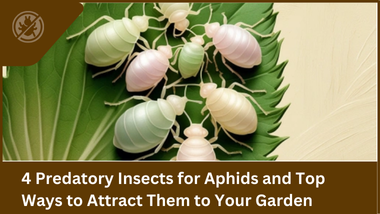Have you ever thought of ultimate junk food junkies in the insect world? Look no further as aphids are the junkies of junk food. These tiny pests thrive on plant sap, stuff themselves with nutrients they need to multiply and spread like wildfire across your plants.
If left unchecked, aphid infestations can quickly become a nightmare in your garden or greenhouse, causing severe damage to your plants.
But before you panic, here’s some good news, nature has your back with an army of predatory insects for aphids ready to fight and get rid of these insects on your behalf.
What Are Aphids and Why Are They a Problem?
Aphids are small, sap-sucking insects that feed on a wide variety of plants. Their insatiable hunger for plant sap causes significant damage by weakening plants, reducing growth, and even spreading diseases.
Their sheer numbers can quickly overwhelm gardens, greenhouses, and crops, making them one of the most notorious plant pests around.
But as destructive as they are, aphids are part of an intricate ecosystem that also supports a range of predatory insects. These predators, like ladybugs, lacewing larvae, and parasitic wasps, are natural enemies of aphids and play a crucial role in keeping their populations in check.
4 Types Aphid Predators
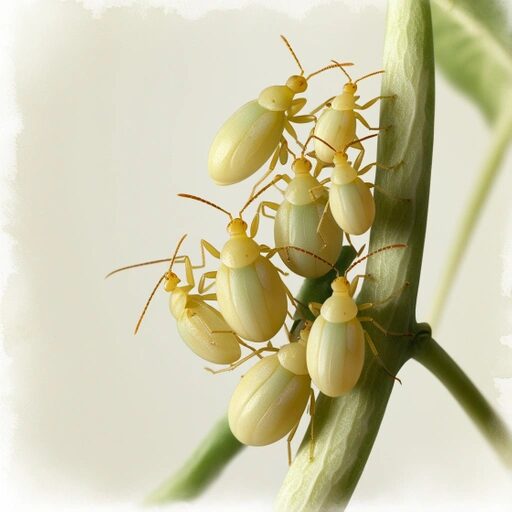
Ladybugs: Nature’s Predatory insects for Aphids
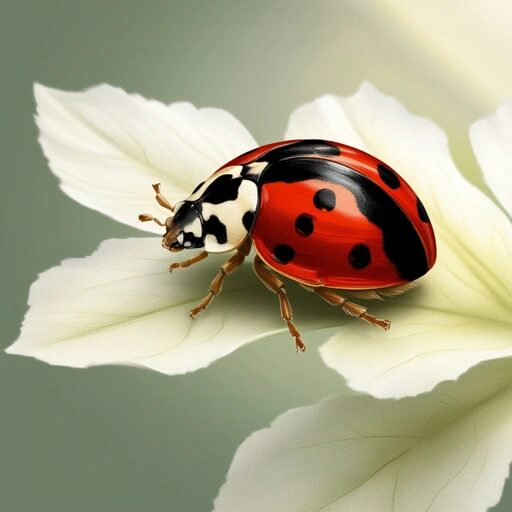
Ladybugs are not just cute to look at, they are ferocious aphid predators. Both the adult ladybugs and their larvae are tireless aphid hunters. One single ladybug can consume up to 50 aphid a day, and during its lifetime, it can devour thousands.
The larvae, which look more like tiny alligators than the iconic red-and-black beetles we know, are even more voracious. They actively hunt down aphids and other soft-bodied insects, making them one of the most effective natural pest control agents in the garden.
When aphid populations explode, ladybugs are often the first line of defense. Gardeners can even purchase ladybugs to release in their gardens, helping to control infestations quickly. Unlike chemical pesticides, ladybugs don’t harm the environment or other beneficial insects, making them a perfect partner in sustainable gardening.
Lacewing Larvae: The “Aphid Lions”
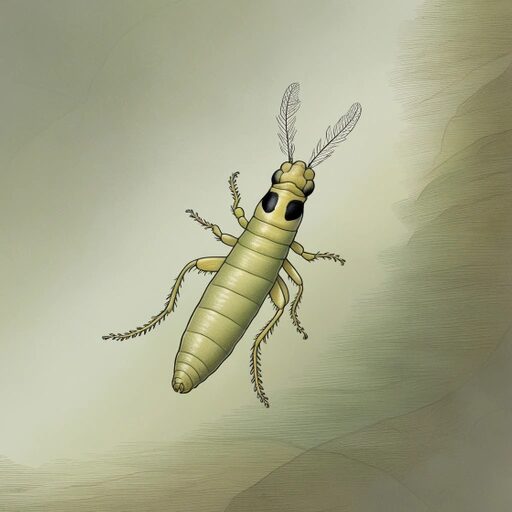
Lacewings, particularly their larvae, are among the most aggressive aphid hunters you can find. While the adult green lacewing feeds on nectar and pollen, the larvae have a reputation as “aphid lions.”
These larvae are predatory from birth and can consume hundreds of aphids in just a few weeks. They have powerful jaws that allow them to grasp their prey and inject digestive enzymes, liquefying the aphid’s insides before sucking them dry.
Lacewing larvae are not picky eaters, they also feed on other soft-bodied insects like mites, caterpillars, and thrips. Their ability to rapidly control large aphid colonies makes them a must-have in any garden.
Like ladybugs, lacewings are available for purchase and can be released in your garden to naturally manage aphid infestations.
Parasitic Wasps: Specialists in Precision Control
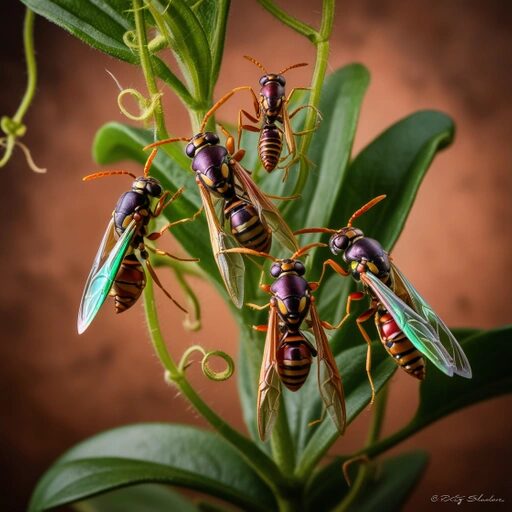
Parasitic wasps may be tiny, but their contribution to aphid control is huge. These wasps, particularly species like Aphidids colemanite, are specialists in controlling aphid populations through a unique and highly effective method.
The female wasp lays her eggs directly inside the body of an aphid. Once the egg hatches, the wasp larva consumes the aphid from the inside out, turning the aphid into what’s known as a “mummy.”
Eventually, the wasp pupates and emerges from the dead aphid, ready to continue the cycle. This process may sound gruesome, but it’s incredibly efficient for controlling aphid populations, especially in greenhouses.
Since parasitic wasp’s target aphids specifically, they don’t affect other insects, making them a precise and environmentally friendly control option. These tiny wasps are often released in controlled environments like greenhouses, where their impact can be maximized to protect valuable crops.
Hoverfly Larvae: The Stealthy Pest Assassins
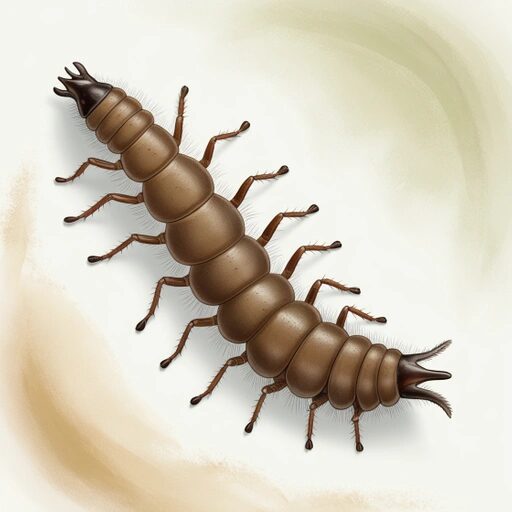
Hoverflies, also known as flower flies, are often mistaken for bees due to their similar appearance. While the adult hoverflies are important pollinators, their larvae are deadly predators of aphids.
Hoverfly larvae are small, soft-bodied, and slug-like, but don’t let their appearance fool you—they are incredibly efficient at devouring aphids. One larva can eat hundreds of aphids in its short life.
Hoverfly larvae hide among plants and sneak up on aphid colonies, consuming them one by one. Unlike lacewing larvae, hoverfly larvae are slower but no less effective in reducing aphids populations.
Hoverflies are attracted to gardens that have plenty of flowering plants, and encouraging their presence helps maintain a balanced ecosystem while providing natural pest control.
How to Attract Aphid Predators to Your Garden
To keep aphids under control and maintain a healthy, thriving garden, attracting natural aphid predators is key. Here’s how to make your garden a hotspot for beneficial predators:
1. Plant Diversity: Invite Predators with a Range of Flora
Predatory insects are naturally drawn to gardens with a wide range of plant species, especially those that produce nectar and pollen, which serve as food sources for adult predators like ladybugs and hoverflies.
By incorporating a mix of flowering plants, herbs, and vegetables, you provide both shelter and sustenance for these garden defenders.
Some plants that are especially effective at attracting aphid predators include:
- Dill: This aromatic herb is a favorite for ladybugs and hoverflies, and its flowers provide nectar that sustains adult lacewings.
- Yarrow: Known for its feathery foliage and clusters of small flowers, yarrow attracts a range of beneficial insects, including parasitic wasps.
- Marigolds: With their bright colors and strong scent, marigolds not only deter certain pests but also attract aphid predators like hoverflies.
Mixing these plants throughout your garden ensures that beneficial insects always have access to food, even when aphids are in short supply. It also fosters a balanced ecosystem where both predators and pollinators can thrive.
2. Avoid Pesticides: Keep Predators Alive
While pesticides may seem like a quick solution to pest problems, they often do more harm than good in the long run. Broad-spectrum pesticides, in particular, don’t discriminate between harmful pests and beneficial predators.
Spraying these chemicals can inadvertently wipe out the very insects that help keep your garden pest-free.
To protect and attract aphid predators:
- Opt for natural pest control methods, such as introducing predatory insects or using neem oil, which targets pests while leaving beneficial insects unharmed.
- Use selective pesticides that target specific pests without affecting predator species. Always read the label and follow instructions carefully to avoid accidental damage to your garden’s ecosystem.
- Hand-pick pests: If you notice a small number of aphids, consider removing them manually instead of reaching for the spray. This keeps predator populations intact and allows them to do their job naturally.
By avoiding harsh chemicals, you’ll help maintain a healthy population of aphid predators and other beneficial insects, leading to long-term pest control without harmful side effects.
3. Provide Habitats: Offer Shelter for Your Garden’s Defenders
Predators like ladybugs, lacewings, and hoverflies need places to hide, breed, and lay eggs. Creating safe spaces in your garden where these insects can shelter from the elements or lay their eggs helps encourage them to stick around and build up their populations.
Here are some ways to make your garden more hospitable for aphid predators:
- Leave some undisturbed areas: Instead of keeping your garden perfectly manicured, leave a few corners of wild plants or brush. These natural, undisturbed areas offer shelter for predatory insects and their larvae.
- Install insect hotels: These specially designed structures provide nesting and overwintering spaces for a variety of beneficial insects, including ladybugs and lacewings. They’re easy to install and can be a fun DIY project to help bolster predator populations.
- Provide mulch or leaf litter: Mulch or fallen leaves create a layer of protection on the soil surface, offering a safe place for hoverfly larvae and other predators to hide while they hunt.
The Long-Term Benefits of Aphid Predators
Using aphid predators is not only effective in reducing aphid populations but also supports a healthier, more balanced ecosystem.
These predatory insects help keep your garden in harmony, ensuring that pests like aphids don’t get the upper hand.
Over time, as the number of natural enemies increases, you’ll see fewer and fewer infestations, meaning less effort and fewer resources spent on pest control.
Conclusion: Nature’s Solution to Aphid Control
In the battle against aphids, you don’t need to rely on harmful chemicals or expensive treatments. By harnessing the power of natural predators like ladybugs, lacewing larvae, and parasitic wasps, you can effectively reduce aphid populations in your garden or greenhouse.
Not only does this method offer long-term control of aphids, but it also supports a more sustainable and eco-friendly gardening practice.
So, the next time aphids invade your plants, don’t reach for the pesticide spray, invite their predators to dinner instead!
